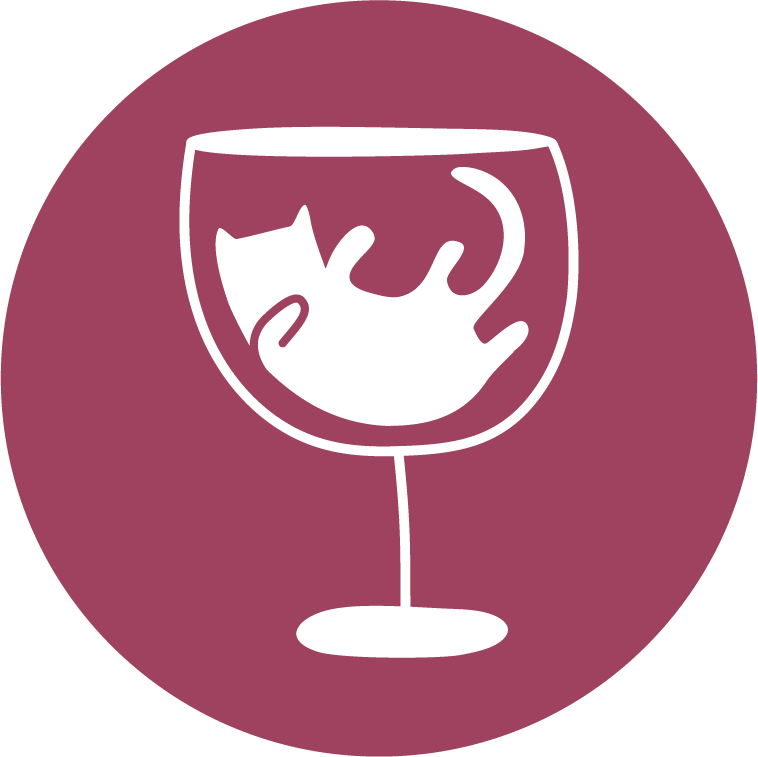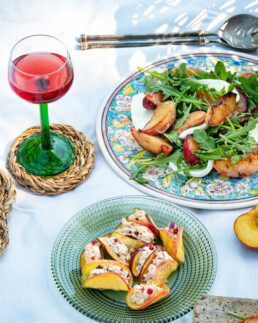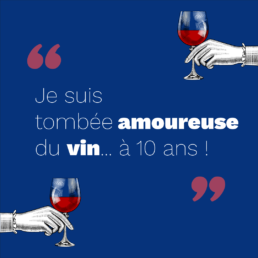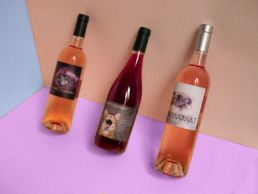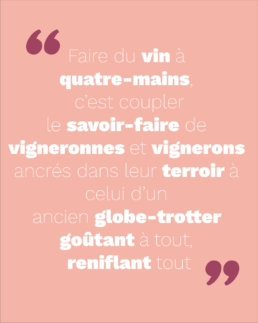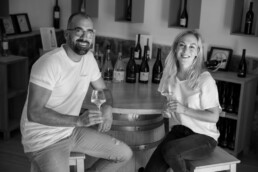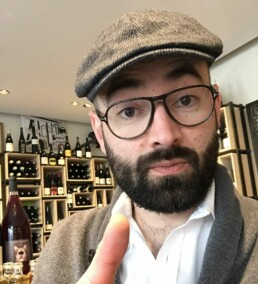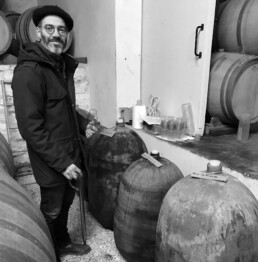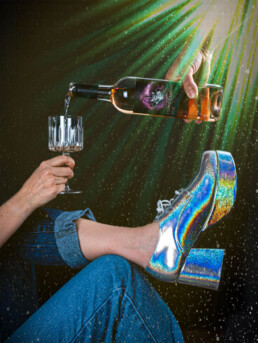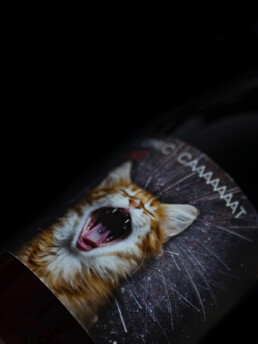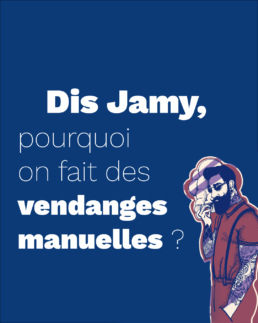What wine should you choose for a picnic façon French Chef Arnaud Delvenne?
Recently, Top Chef (pro cooking reality show) has seen French Chef Arnaud Delvenne put a light on the tuna with peaches recipe.
What’s tuna with peaches? It’s a Belgian speciality which, as the name suggests, mixes peaches and tuna. When you say it like that, it doesn’t sound particularly appetising, and yet, Arnaud, one of the show’s finalists, has shown us that it is a banger.
So, two friends of Caaaaaaat, Ségolène & Serena, have dug up and immortalised three tuna and peach recipes for your picnics, and of course there’s a picnic/wine pairing to enhance everything.
Peach salad
Ingredients:
- Roquette
- 2 large peaches
- A little bit of butter and sugar
- A nice burrata
- A few mint leaves
- Olive oil & salt
Method:
Cut the peaches into 8, remove the pit, fry them for a few minutes on each side with a little butter, 1tsp of sugar and a little salt at the end of cooking.
Be careful, they need to stay firm, you just need to brown them off!
Wash the roquette, cut the burrata, take the mint leaves off the stem and mix it all together with the peaches, season with a little olive oil, salt and pepper.
Tuna and peach club-sandwiches
Start by toasting your favourite bread (from a nice bakery). If you live in Paris or Lyon you could try Antoinette, Utopie or Mamie!
At the same time, mix a tin of tuna with cream cheese, a finely chopped shallot, chives, lime juice and let’s season it: salt, pepper and crushed pink peppercorns.
Garnish the bread, a little salad on top and close it up. It’s ready! Serve straight away with Atomic Caaaaaaat.
Arnaud Delvenne’s ravioli
Ok, this couldn’t be simpler! The peach will play the part of the ravioli which we will garnish with the tuna mix. If you speak French and fancy trying a Top Chef level recipe, you can find it here (lien).
Our version is much easier, you just need to:
- Cut your peach into thin slices using a mandoline.
- Make a light tuna tartare and season with sesame seed oil, lime juice, salt and pepper.
- Place the tartare at the centre of the peach slice and close it to make the ravioli.
Which wine will accompany this picnic?
Rosé? Red? Which wine goes with a tuna and peach picnic?
Once again, it’s simple: Atomic Caaaaaaat will pair perfectly with these dishes. Its juicy flavours, soft spices… the pomegranate squash for grownups will match this sweet and savoury duo.
If you’re careful about what you put on your plate or in your glass, you should know that Atomic Caaaaaaat is a natural wine, manually harvested with the grapes sorted on the vine and a second time in the cellar. Like a good fruit, there are no inputs at any point throughout its production process.
Bon appétit !
Short interview of Ms Rachel Gay from La Planque (Savoy)
We like to shine a spotlight on our partners, so we’ve decided to talk about Rachel Gay, wine specialist at La Planque in Savoy, Caaaaaaat ambassador, partner in crime.
It all started when Rachel was 10 years old, she fell in love with the label on a bottle of Muscat from Cap Corse. On this day, she announced to her parents that she would become a wine specialist. Since then, she’s blazed her trail and has never looked back. She’s studied wine, held internships with wine estates, had experience with a wine shop with over 4000 references in Canada, and finally, returned to France. In Paris, Rachel had a professional meeting with Yann Diologent (to whom she had already sold Muscadet a few years earlier), which would be decisive. She belonged in Paris at the wine shop Le Sourire au Pied de l’Echelle.
Her favourite customer? One who knows nothing about wine, it opens up endless possibilities.
Her favourite pairing for Atomic Caaaaaaat? A delicious strawberry tart to bring out its wonderful citrus notes.
What’s it like being a woman in the world of wine? “Even though I’ve been pretty lucky because I’ve always been taken seriously by my colleagues, it’s true that a woman, as is the case in many sectors, needs to prove herself more than her male counterparts. And there’s always that customer who only wants to talk to the boss… but luckily that’s not the majority, and that’s great!”
So if you want to make the most of Rachel’s expertise, head over to:
La Planque, 2 Rue des Vernaies, 74230 Thônes, France.
More info here : https://laplanquecaviste.fr.
And if you want to try Atomic Caaaaaaat with a strawberry tart, go to your favorite wine shop and pastry!
Rosé, is it wine?
Rosé, is it wine?
Let’s get straight to the point: yes! It’s even the second most popular wine colour in France, ahead of white and after red (source: FranceAgriMer and OIV).
Where does rosé come from?
Rosé wine started in Provence, the first historic vineyard in France dating back to sixth century BC. The vine was introduced by the Phoceans or the Phoenicians (historians are still debating!). Makes you think, doesn’t it? The biggest rosé producing region in the world is 2500 years old.
The production of rosé is part of French ancestral expertise and savoir-faire. All French wine-producing regions make it, whether it is an AOP (France’s protected designation of origin), an IGP (European protected geographical origin) or a Vin de France.
How do you make rosé?
In France, rosé is a wine in its own right, which requires know-how. It is made with purpose, with specially chosen grape varieties and terroir. It gets its colour from the skins of red grapes. The grape juice is in contact with the skins for an amount of time decided on by the person making it: the longer, the more colour the wine will have. Simple.
Outside of the numerous other countries, in France, only the Champagne region is authorised to blend white and red wines to make a rosé. Even this method has precise rules. For example, winemakers in Champagne can only do it before the secondary fermentation.
“50 shades of rosé”
There are many rosé colours, obtained from red grapes and linked to contact time between the juice and the skins. Of course, bad wines have a thousand artificial techniques for achieving the desired colour (like through carbon filtration). Bad wines being not of interest to us, let’s look at the shades of rosé, their origin.
Rosé wine through pressing: we directly press the harvest (whole or destemmed), more or less slowly depending on the result we want, and we transfer the juice into the vats (or barrels) to start the alcohol fermentation. With this technique, we create clearer rosés.
Rosé wine through maceration: the difference from the first method is simple. Upon receiving the harvest, we don’t directly press the grapes, we place them in the vat to macerate them (up to 24 hours, more than that and it starts to become red). The grapes then release their pulp, their seeds and their juice. It’s during this short period of maceration that the juice becomes coloured, it becomes pink. We then press the must to only extract the liquid, the grape juice, which will then ferment; preferably at a low temperature in order to preserve as many flavours as possible.
Rosé wine through bleeding (saignée): the harvest is put into a vat (like the maceration method) and intended to make red (unlike maceration). After a set maceration time (up to 48 hours), we remove the juice we want to vinify from the vat… it’s already nicely coloured, it will ferment and be our “rosé de saignée”; the other part of the vat is left to gently macerate to create a red wine.
Drinking rosé, a guaranteed headache?
Not at all! Only drinking a bad wine (or way too much wine) will give you a headache. Rosé, if it’s well-made, will not have excess sulphites or other additives which will overwhelm your liver, thereby leading to dehydration and the famous headache. When drunk responsibly, rosé can be enjoyed just like a wine of any other colour: red, white, orange!
What’s the best rosé in the world?
Speaking completely impartially, of course, there are three: Sunny Caaaaaaat (macerated rosé), Cosmic Caaaaaaat (rosé de saignée 24h) and Atomic Caaaaaaat (rosé de saignée 48h). We write this out of pure experience.
Conclusion
Rosé is a real wine, a singular wine, a wine for BBQs, for family feasts, for any time of year!
Four-hands, what does it mean?
Massage? Cooking? We practically massage the vines, we practically cook the wine... Four-hands, it’s the modus operandi of the Caaaaaaat collection.
The how and the why
Started based on the model of perfume makers who select and gather together fragrances from plants from specific areas, little by little, the Caaaaaaat adventure has transformed from the art of blending to those of winemaking. A famous French newspaper presented Christophe Kaczmarek debuts: “he draws his inspiration from master blending, which has been dramatically enhanced by the Japanese. Victims of their success, Japanese distilleries had to reinvent themselves when they ran out of old whiskies, they sold out too quickly due to an unexpected enthusiasm. So, to create these wines, this artisan started blending different plots chosen with his partners winegrowers: one domain being equivalent to one or more cuvées. In the manner of a parfumier, he tastes from numerous vats and barrels, then decides which ones will go together, concentrating on the organoleptic qualities of each juice”.
This blending evolved. It now takes root in the vineyard, through the choice of plot, the exposure, the soil, it continues in the cellar with the choice of the winemaking process, the choice of containers for maturing the wine (barrel, steel vat, fibreglass vat, concrete vat, earthenware urns, amphora…), the bottling date... Simply put: making the wine in a team effort. Chris’ next step? Planting vine in Britany, but that’s another story…
Making a four-handed wine is about combining the winemakers expertise, rooted in the terroir, with that of a former globe-trotter trying everything, sniffing everything (like a cat!). To this age of immediacy and unbridled narcissism, the Caaaaaaat collection opposes patience and teamwork; patience required by a respectful wine production, teamwork of the four-hand.
And of course, our wines are made in the most possible natural way.
Who do we collaborate with?
It’s simple! We work with our friends. This doesn’t happen overnight. Christophe is a wine buff, he’s been cultivating friendships on French vineyards since 2005. The idea of the first Caaaaaaat wine came in 2018, during a visit to a friend’s vineyard in Cahors. It all started there, Atomic Caaaaaaat was launched. The world of wine being a village, winegrowers talk. This friend from Cahors spoke to Romaine Paire, Banana Caaaaaaat was born, then Sunny Caaaaaaat (with our friends from Domaine de la Navicelle), Cosmic and the whole living collection of wines.
In this four-handed teamwork, it is about revealing great under-estimated terroirs like Gascogne in the south-west of France (Karate, K-Pop, O.G.), showing a new side of a well-known terroir like Côtes de Provence (Sunny) and Chablis (Supreme), trying new winemaking techniques (Pyjama), bringing high altitude Volcanic Loire terroirs into the light as well as their flagship grape variety: Gamay Saint-Romain (hello Banana)...
It’s a team effort in which we can let our creativity run free. We never forget to enjoy ourselves (life is short!) and free ourselves from current codes, contributing to the evolution of wine traditions.
The wines are made, blended, bottled and packaged at the domain. They are only transported to find refuge in wine cellars, restaurants, bars which love wine and life.
So, where can I find these cosmic wines?
In Caaaaaaat partners’s joints!
Interview of Domaine de la Navicelle, partenaire of our Côtes de Provence « Sunny Caaaaaaat »
Making four-handed wine is about combining winegrowers’ know-how, rooted in their terroir, with that of a former globetrotter who tastes everything, smells everything (like a cat!).
For our summer rosé, we’re heading off to Provence, to the wonderful Domaine de la Navicelle, with its 21 hectares of vines cultivated with a desire to regenerate the ecosystem, respect nature. The vines are Organic and Biodynamic agriculture certified.
At the head of sales and production: Alice and Romain.
How would you describe the Domain in a few words?
Romain – La Navicelle: ecosystem, biodiversity, maritime influence are the main characteristics of the domain! All while very distinctely highlighting the notion of terroir.
How do you work in the vineyards and the cellar?
Romain – Organic farming and biodynamic methods are day-to-day for the team, with a particular preoccupation for the lifecycle of the soil. Zero chemical weeding, zero insecticides, 100% manual harvesting, super selective sorting, wine-making with perfect plot selection, these are the keys to the finesse and expression of our wines.
What do you think is essential for making a good wine?
Alice – Good grapes, harvested at the right time because it all starts on the vine! Then passion, patience and a touch of madness.
We cocreated Sunny Caaaaaaat. What was the best part (other than Christophe 😸) about cocreating this wine for the Caaaaaaat collection?
Alice – Christophe is passionate, like us! Working with him was a foregone conclusion. He knows how to translate our work, to explain it to his customers with spirit and talent. There’s great synergy and a human adventure above all. And also, we love cats!
What would you like to say to anyone who wants to work in the wine industry?
Alice – The world of wine is exciting, rich and multi-faceted, but paradoxically, also quite small. Nothing is easy, you need to be patient, curious, open and creative.
An ode to Provence?
Alice & Romain – Provence elates the senses! The smell of garrigue and lavender, cicada song and the sound of wind going through the pine trees, the changing lights, the bright colours… It amazes the nose, the taste buds and the eyes!
At Caaaaaaat, we like working with Domaine de la Navicelle. It is an uncommon Domain which places importance on the land and respecting nature. Having the desire to work with organic and biodynamic wine is quite rare for a Rosé from Provence!
They also have a distinctive characteristic: Tibouren! An unusual grape variety present in the crazy Sunny Caaaaaaatcuvée. And of course, as with all our four-handed wines, this variety is above all the result of cooperation between humans who like and respect each other.
Interview with the Founder: Christophe Kaczmarek
Who are you?
A wine buff, I’ve dedicated my life to it. First as an employee for wine companies, then I decided to give 100% of my time to wines I like, to a way of life I want to share.
In concrete terms, I started working in wine in 2007. I was looking for a student job, a friend pointed me to Le Repaire de Bacchus. He said “This is for you! Go see Paolo Bouca Nova and tell him I sent you”. I went to the wine shop on Rue Montorgueil, I found a mentor who became a friend, a love story with wine had begun. Before crossing the threshold of this wine shop, I didn’t know anything about wine. After six months of work, I knew wine would become my life. I went through different jobs around wine; grape picker, waiter, wine merchant, exports manager, wine bar manager (in New Zealand!), agent, trader… Today, I focus on what is most important to me: wines with a priority given to RESPECT.
In 2015 I created COQ AU VIN, an agency for wines made from organic and biodynamic agriculture, where my work focuses on ten key estates providing particular care to Mother Earth. Thanks to this reduced number of estates, I know the vineyards and the wines by heart, I share the winemakers’ passion, I follow their work closely and play a direct role.
Since with ten estates you cannot earn a proper living (and my head was brimming with ideas), I decided to create my own wines with the intention of creating a bridge between the worlds of wine. It was from this idea that the Caaaaaaat collection was born, a collection of independent wines co-produced with talented winemakers. The priority has always been “respect” for the fauna, flora, and human, any type of life, with total freedom of tone, container and content.
What types of wines are produced in the Caaaaaaat collection?
Freedom and Respect are the key words. We work on making wines as simply as possible; with fermented grape juice, organic, biodynamic wines, certified or not, with no added sulphur. And as “simplicity is the ultimate sophistication” (it wasn’t Caaaaaaat who said that, it was Leonardo da Vinci!), it requires a lot of care, time and the human touch. It’s a balancing act. In other words: making natural wine is painting a Rembrandt.
Why cats in space?
First of all, because supernovas are exceptional interstellar explosions. They release gas and dust heated to thousands of degrees, and therefore create amazing colours. Blue and green colours come from the emission of X-rays from the gas heated at thousands of degrees after deflagrations created by the explosion of the supernova. The red represents the boiling dust and the yellow comes from young stars, both detectable via infrared.
Secondly, cats are special. It makes us wonder: are they extra-terrestrials propelled from the edges of the galaxy from the explosion of the Kitty Caaaaaaat supernova?
Are you not afraid of unsettling the consumer, particularly in France?
As an entrepreneur, fear is baggage I prefer to not carry with me! Wine is a traditional sector where we don’t take enough risks. I took the gamble to go to an audience who is open-minded and would be stunned by the quality of the wines. Blind tasted, the Caaaaaaats knocked out the prejudices and snobbery. I’m delighted if our approach unsettles people and opens up a discussion, a debate, we love that in France!
Who is your target audience?
Haha! If I wasn’t a man lost in business, I would have a pre-planned answer… and I don’t have one! I want to maintain freedom regarding our productions, a target audience would change that. Creating a bridge between the worlds of wine compels us to not restrict ourselves to a specific audience. Seeing our wines being drunk by everyone (of legal drinking age), regardless of who they are, makes us happy.
What do you want to say through your concept?
If, with the Caaaaaaat collection, I can bring sensory pleasure and some fun, it’s a success! Like with Karate Caaaaaaat, which is a pure juice, a superb natural gastronomic wine.
Let’s go deeper. In this literal world, where ideas and individuals are stigmatised, you have to not take yourself seriously. We are rigorous, uncompromising in our work and it is precisely because I work with excellent, talented winemakers, that I can be side-lined. I’m comfortable with that. The wines we offer are made with extreme care (a lot more than certain “prestigious” wines).
Life is short and we are just dust, so let’s not waste time taking ourselves seriously.
How do you see the next three years?
In terms of production, the Caaaaaaat collection will offer nine wines, like a cat’s nine lives! There will be three whites, three rosés and three reds (passionate about numerology, I get you). I’ll continue to step off the beaten track with our co-productions, bringing artists into our projects, always going further in our environmental commitment by reducing bottle-weight as much as we can, making them refillable where possible, obviously maintaining our 100% Made in France approach, and of course bringing out underestimated French vineyards like with Cosmic Caaaaaaat Rosé Indigène or simply bringing another point of view to established areas like with Atomic Caaaaaaat… in short: they are going to be plentiful!
On a personal level: keep learning. Wine is an infinite world where we never stop learning, and this is even more true in the era of extremely rapid climate change. Expertise in wine is a label, placed by courtiers on their Pygmalions. The subject is vast and historical. Who can claim to know perfectly well 8000 years of working vines and making wine? This is all the beauty, the extraordinariness of wine, which I will continue to nourish my body and soul fir the next three years and my entire life.
What’s your favourite Caaaaaaat?
I like them all! I don’t want to offer a wine which I don’t enjoy from an organoleptic point of view. So no unconfessed favourite, but there will be a new wine soon: a skin-contact wine coming from a great plot of Domaine Entras. This Caaaaaaat has all everything a great wine has: it’s an orange wine, a skin-contact wine which required painstaking, manual, precise work. It’s a natural wine, matured with the greatest care (vat, barrels and clay amphora). It has a wonderful colour, it’s a wine to be enjoyed on every gourmet table! To do all this, we carried out another balancing act…
One sentence to sum up your connection to the world of wine
Day to day, I’m crazy about wine, a geek, a nerd, an enthusiast.
Professionally: if wine were a symphony, the land would be the score, the winemaker the musician, and I’m finding my place in the orchestra.
Final thoughts about the future?
Yes! I’m working on a project to plant vines, probably resistant grape varieties, also called “hybrids”, in Britany. This project will coexist with the Caaaaaaat collection which I enjoy so much. Cheers to good wine!
Interview with Michel Maestrojuan: Domaine Entras, Gascogne partner
Making a four-handed wine is about combining the winemakers’ expertise, which is rooted in the terroir, with that of a former globe-trotter who tastes everything, smells everything (like a cat).
For a red to accompany your meals, our Merlot brings back the prestige to this slandered grape variety, the famous Karate Caaaaaaat (which is between 45 and 120 times cheaper than Pétrus), we head of to Gascogne, to Domaine Entras with Michel Maestrojuan.
Can you describe yourself in a few words?
Tall, blond, long-haired and handsome… No, just kidding!
How did you get into winemaking?
My parents were winemakers. I’ve always been around the smell of fermentation (in the cellar), the vines in summer (organic farming), the bustle of harvesting… but I think I discovered the magic of wine in my Agricultural School’s wine club. A few years later, I went back to my childhood home and I threw myself into the winemaking adventure.
What is your work process like?
I manage 29 hectares of vineyards and 60 hectares of different crops like wheat, small spelt, soya, fenugreek, triticale, field beans. The entire estate was Organic Agriculture certified in 2021. I use plant covers for the vineyards and I replant various native hedge species. Little by little, I’m introducing biodynamic preparations to my crops and I’m analysing the results. I make wine with indigenous yeasts. In the wine cellar, I use vats, casks, tanks, earthenware jars. I apply a long aging period, with or without sulphur depending on the wine batch. I’m trying to progress freely in my choices and I think the wine benefits from that.
Is there a message behind your wines?
Drink me, I’m good and wholesome, I’m good for you.
What did you like about co-creating Caaaaaaat wines?
Meeting Christophe K, the free spirit, catalyst for wine and winemaker.
Any upcoming projects?
“Orange is the new wine”. Christophe and I are working on a new colourful collaboration at the moment (it is out, see here).
What’s the dream for a winemaker?
Making an easy drinking wine, with depth, you want to finish in one go.
Thank you Michel for taking the time to talk to us. Thanks to Domaine Entras for being our partner. We love you!
Creating a bridge between the different worlds of wine
With the Caaaaaaat wine collection, we want to create a bridge between the drinkers of mass-produced wine and those who drink natural wine. The former buy this type of wine for the price, the latter because of their way of life. Swimming in the middle of this ocean of wine are those who are guided by lots of criteria, including their tastes, their instincts, recommendations from critics they trust, friends…
Creating this bridge will not please everyone (after all, there’s always someone who objects, isn’t there?). It is easy to criticise when you are looking at the problem from the outside. It is very different when we experience it from the inside. We cannot ignore the fact that 88% of wine in France is purchased in supermarkets (source: La Revue de Vin de France), or the fact that natural wine cellars and bars are growing more than ever before (source: our eyes and ears). So the main obstacle in creating this bridge is ignorance. The kind that sounds like common sense: “why pay more than £5 for wine if the one I buy already is fine?”, “why don’t they only make natural wines?”, the kind that requires you to take an interest in a subject: “what are the differences between conventional, organic, biodynamic and natural agriculture?”.
When we criticise the winegrower who uses chemicals to make wine, we are fighting the wrong battle. When we criticise the consumer who buys their £5 wine or buys from the supermarket or wine from the chemical companies, we are fighting the wrong battle. The REAL battle is against ignorance and the chemical industry (at the very least the industry producing poison) which knows perfectly well what it is doing. Let’s not fight the surface level problem, this simplistic critique against winemakers and consumers. Of course, we all have a responsibility, but these people are hardly the bad guys.
Certification labels are flourishing, associations and other endorsements, responding to the surface of the problem, often adding to the confusion. It is an observation. We are not against them (on the contrary!), but we don’t think it is enough. As wine producers, we try to create a bridge between these two worlds of wine, this thousand-year old concoction which is a driving force for universal humanism.
By combatting this ignorance, which leads to social divisions, a form of tolerated obscurantism, we come up against resistance to change, fear, and the foundation of certainties on which it is built. In the infobesity which feeds social media, you have to specialise in order to stand out, to be visible. It is a pragmatic response, symptomatic of our information stuffed age, but also creates a lack of understanding for those who only want to hear ideas which reinforce their own. Learning comes from the new, the other. It is with nuance and patience that we progress into knowledge.
Explaining the different winemaking methods, and why they exist, requires time and has to be sexy enough to pull in an audience. Media stakeholders are working on this with a number of newspapers, magazines, blogs, columns and shows… our role is to offer knowledge through the product itself, the wine, a source of enjoyment, sharing and taste. In this process, we want to have fun, coach you with us, add some joie-de-vive; this is precisely why we are here (that, and throwing cats in space).
How to recognise a good/real natural wine?
If you are interested in natural wines, you’ve already got some of the information. So, let’s dig a little deeper, together, hand in hand.
Natural wine is a mentality, a way of life. It is about questioning how we live, our place on the planet. Natural wine is free, it’s naked, with no additives, no alterations, it reveals itself with its pros and cons (unlike Man, it doesn’t always have them!)
We talked about greenwashing, we can help you to counter it with some handy tips:
Tip no.1: be wary of companies using derivations of the word “natural”, which are pleasing on the ear. Regulations around natural wine are just starting to be implemented, these cheeky companies know that and play with their words.
Tip no.2: the phrase “with no added sulphites” is not enough. Again, the cheeky companies have found substitutes for sulphites, like ascorbic acid (and you won’t see it on the label).
Tip no.3: if the wine has not made the transition to organic or biodynamic agriculture, there is a good chance that they are not natural, a good chance but not totally impossible because some winemakers refuse the certifications and still work very well.
Tip no.4: the wine is cloudy (common with unfiltered wines).
Tip no.5: the wine contains some gas (this is natural, it comes from fermentation and it protects the wine).
Tip no.6: the wine smells funny when you open it ; this could be many things, often it is what we call the reduction, namely the reduction of oxygen, it is a good sign, the wine won’t be oxidised.
Tip no.7: all three at the same time!
Tip no.8: none of the above but the wine is bursting with fruit and goes down like no one’s business!
And if all that is just too exhausting, drink the natural Caaaaaaat wines (if you are here it’s surely because you already like them!), visit outlets who specialise in natural wines (they exist) and ask advice from your local wine merchant (support your local business!).
Wine in short | Why is manual harvesting better?
Do you know why manual harvesting is better? We’re here to explain all!
Manual or mechanical?
Despite the surge in mechanical harvesting, you cannot replace the grape picker’s expertise and touch or the winemaker’s knowledge.
In addition to being a moment of conviviality (which, we grant you, does require some elbow grease and a good strong back), manual harvest is also the gentlest on the grape.
This method is fastidious and long, but there is nothing like the deft hand of a human to collect the bunches of grapes, given how fragile certain varieties can be. Also, it allows us to only collect the ripe grapes and leave on the vine those which are not ready (the wine feeds off of the juice from the remaining grapes!). Manual harvesting also allows us to sort the bunches while they are being collected. So the grape quality is optimised!
But?
Even though there are debates, for us it is settled: manual harvesting is good if the workforce is good. If it is not, it can be worse than mechanical harvesting.
For us, manual harvesting is essential for producing high quality wines. However, mechanical harvesting can definitely be adapted for harvesting grapes for simple wines, sometimes even for very good wines. In addition, this enables economies of scale, which creates more affordable wines for the consumers. The machines have been improved so much that they give good results.
In conclusion, there are positive consequences for the wines produced and their image following manual harvesting (for example, certain designations like Champagne and Châteauneuf-du-Pape impose it in their specifications). At Caaaaaaat, we offer you hand-harvested wines for your enjoyment all year round!
And if you want to know more about our methods, you can read about them here.
